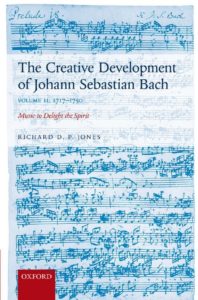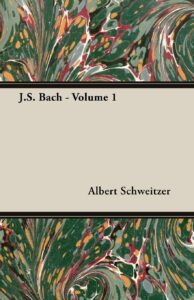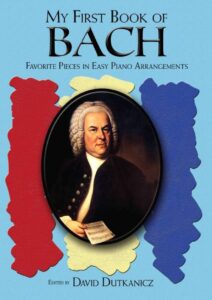Browse in the Library:
and subscribe to our social channels for news and music updates:
Bach, Bach, Bach – Some J.S. Bach transcriptions and reinterpretations for piano solo
J. S. BACH – SHEEP MAY SAFELY GRAZE (Schafe könen sicher beiden) Aria from the secular Cantata BWV 208 Piano solo arr.
Sheet Music Download
Bach – Invention No. 1 in C Major, BWV 772 with Sheet Music
Bach Wilhelm Kempff Jesus bleibet meine Freude Jesu, Joy of Man’s Desiring BWV 147 sheet music
J S Bach – Air on the G String (Piano solo arr.) from BWV 1068 with sheet music

A. Schiff plays Bach three part inventions No 1 in C major BWV 787 with sheet music
Prélude in C Major – Bach guitar
Bach – Kempff – Siciliano from Flute Sonata No 2 BWV 1031 with sheet music
Bach – Busoni Chaconne in D Minor (Kissin) for piano solo (with sheet music)
Bach – Busoni Ich ruf zu Dir BWV 639 (Tanski, piano) with sheet music
Bach Prélude from the Suite No. 1 for Cello BWV 1007 arranged for guitar (TABS)
Bach Prelude in C Major BWV 846 (WTC I) Guitar arr. with sheet music and TABS

Guitarra Bach Minuet en Sol
Bach, Prelude I in C minor, BWV 999 from the Well Tempered Clavier (Book 1) with sheet music
Bach’s Proglude in A minor for electric guitar and bass (with sheet music)
Bach Toccata and Fugue in D Minor BWV 565 (Piano solo arr.)
Bach, J.S. – Awake, calls the voice to us – Wachet auf, ruft uns die Stimme BWV 645 (Piano Solo arr.)
Bach – Prelude and Fugue in A minor (BWV 543)
Bach plays French suite no 5 Hamelin, piano
A. Schiff plays Bach 15 three part inventions BWV 787/801 (sheet music)
How to play Bach at the keyboard – Some considerations
The ever-increasing number of performances of Bach’s music is a sign of its enduring vitality. Yet there now exists a diversity of interpretation of a magnitude that probably applies to no other composer. None of these methods can immediately be termed right or wrong. Too much depends on local and social conditions, and indeed on the attitudes and identities of performers and audiences. In general terms it is possible to distinguish three main tendencies in Bach interpretation, and these in turn could easily be subdivided:
- Historically minded musicians pretend that they and their audiences are living in the time of Bach.
- Performers who have a predilection for the style of the nineteenth century like to operate with large masses of sound, thereby emphasizing specific expressive elements. They seem to be blissfully unaware of the results of musicological research.
- Performers who prefer the style of the twentieth century aim at a compromise. Their wish to perform Bach’s music using the resources available today means that they are not afraid of making use of adaptations, though these are often even more remote from the original sonorities than nineteenth-century ‘romantic’ performances.
We should not forget those ‘pseudo-historians’ whose view of Bach is often diametrically opposed to that of Bach scholarship, which can after all look back on more than a hundred years of serious, solid work. They attempt to create the impression that they are drawing on sources and documents that have hitherto escaped the notice of previous scholars, and that this justifies a view of Bach that is completely at variance with the one-handed down to us by Bach’s sons and pupils.
Occasionally such ‘pseudo-authentic’ performances can be totally compelling, as in the case of Glenn Gould, whose pianistic mastery and great literary gifts helped him to put across his often eccentric ideas. Glenn Gould may have fascinated his listeners, but Wilhelm Furtwangler, whose style somehow combined the second and third of the interpretation categories suggested above, possessed the ability to move his audience.
His performances were imbued with a ‘spiritual magic’, a passionate immersion in the music that silenced objections to the lack of stylistic accuracy. The Bach scholar Hermann Keller once expressed it thus: ‘I know that much of it is quite wrong from a historical standpoint, but nevertheless it makes a profound impression on me.’
In spite of such exceptions I believe that as far as the modern performer is concerned there can in fact be only one task: to recognize and respect Bach’s musical and intellectual intentions as well as he can, and, by using the means available to us today, be it voices trained in the old or the modern style, or early or modern instruments, to convey them to a late-twentieth-century audience in such a way as to bring about Gemiitsergdtzung in the original meaning of the word, that is, the pleasure and spiritual enrichment to be derived from experiencing the greatness of Bach’s music.
In order to reach this goal, it is above all necessary to bridge the traditional divide between musicology and practical music-making. I am convinced that this is possible, for I believe that the application of knowledge is not inimical to intuition and inspiration. Rather, knowledge can and should be an enrichment. However, good intentions are often more important than detailed historical knowledge.
In other words, a truly enthusiastic amateur church choir can sometimes perform Bach more ‘correctly’ than an ensemble of uninspired professionals. I am also deeply convinced that the performance that comes closest to the intentions of the composer (not only in the case of Bach) is the one which will move the audience in the most profound way. I pursued my research with this in mind, and in setting out the results of my investigations I am also concerned to demonstrate the extent to which this knowledge can be applied today.
Bach’s unsurpassed mastery of the art of counterpoint has repeatedly caused him to be viewed exclusively as a designer of ‘abstract’ musical configurations, and this not only in his canons and fugues. Even Beethoven’s famous statement that he should not be called Bach, a stream, but Meer, the ocean—an ocean, that is, of contrapuntal art—points in this direction. Hans Gal’s fitting description of the canons of the Musical Offering may be applied to the whole of Bach’s work:
The involved scholastic devices to be found in some of these amazing compositions might give an impression of ingenuity for its own sake, if judged on a superficial impression. But this is certainly not the case. When Bach put his mind to tricky problems like these, he did it in the spirit of the masters of the fifteenth and sixteenth centuries, who developed this kind of technique: as a discipline and a stimulus towards the utmost concentration under conditions of extreme technical difficulty.
The essential fact is that the result is not mathematics but music, a flow of impeccably controlled events, and that even under the severest restriction of space the inventive imagination always succeeds in creating a fluent, expressive composition. For a master’s inventiveness, the technical problem is not an obstruction but a stimulation.
Browse in the Library:
and subscribe to our social channels for news and music updates:
